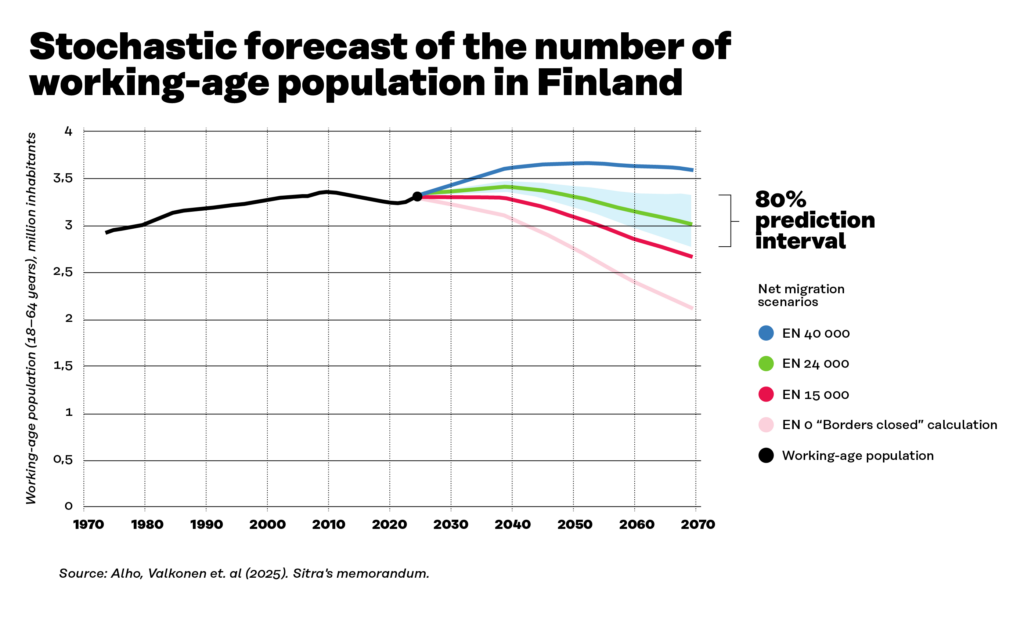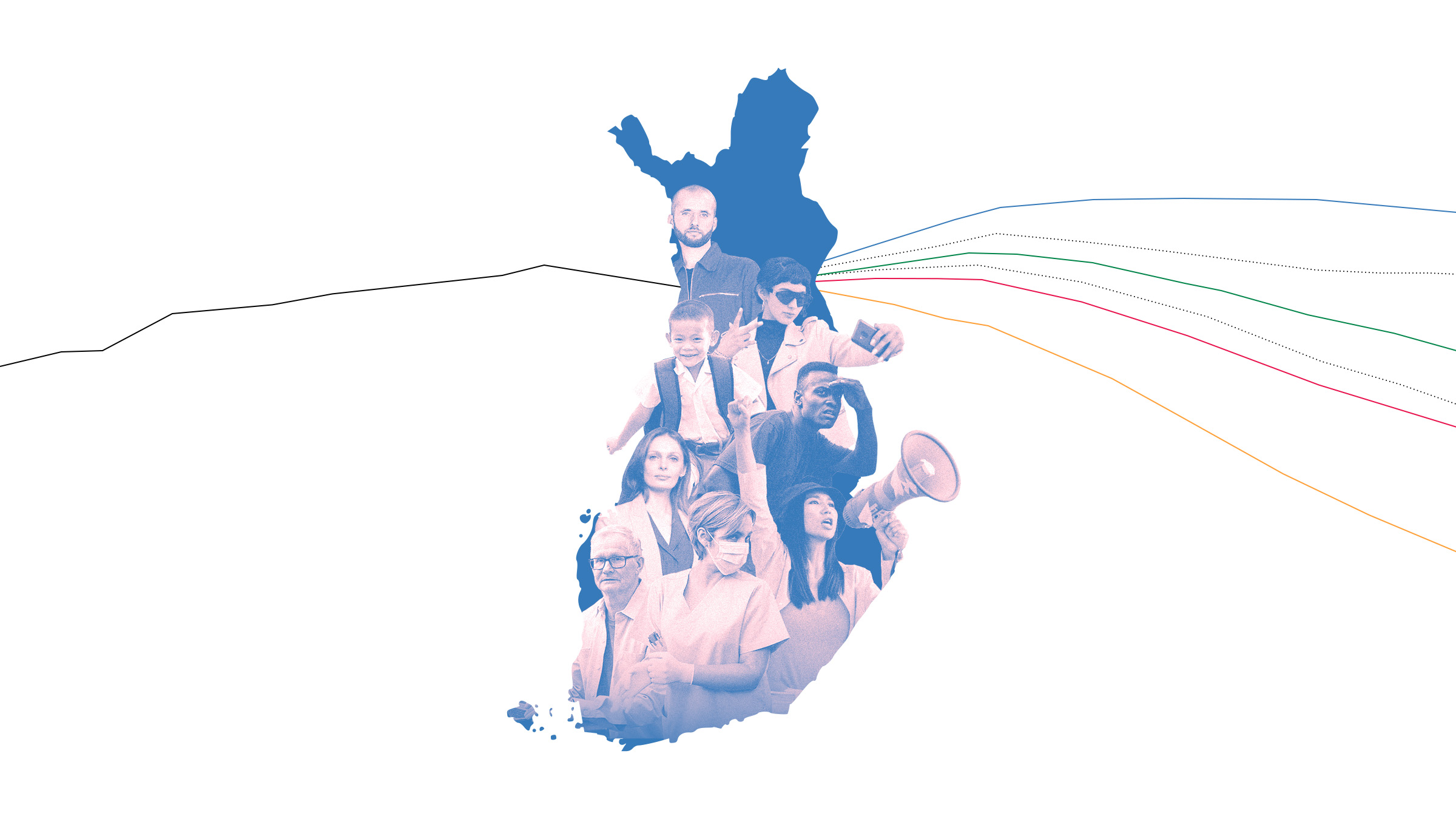According to the stochastic forecast for 2025–2070, the number of working-age population will start to decline in Finland already by the 2040s.
This probabilistic population forecast also indicates a rapid increase in uncertainty as the forecast horizon increases. Looking at 2050, 80% of the pathways in the number of working-age population fall within a range whose boundaries are 200,000 people apart. In 2070, this gap will already be more than half a million people.
“Considering that there is so much uncertainty about future development, it is necessary to prepare for both good and bad scenarios. It is noteworthy that even net annual migration of 40,000 people would not be sufficient for a permanent increase in the number of working-age population,“ Sitra’s Chief Economist Matti Paavonen points out.

Immigration affects the national economy, especially through the supply of labour. It is likely to secure the availability of labour in public services and accelerate the growth rate of private production for decades, though ultimately a low birth rate would reverse the trend.
“Calculations indicate that promoting the skills and labour market readiness of immigrants is a worthwhile investment. An increase in the supply of skilled labour brings other investment, economic growth and well-being,” underline the researchers at ETLA Economic Research (Etla) who prepared the study for Sitra.
Finland’s population is both decreasing and ageing, which is reflected in the sustainability of public finances. The stochastic forecast gives an 80% probability that the sustainability gap will settle at 0.9-3.6% of GDP over a 100-year horizon.
Stochastic population forecast helps outline the range and probabilities of development
Instead of point-to-point population forecasts, many have hoped for a forecast that will help outline the probabilities of different population pathways. Etla’s stochastic population forecast meets this demand, as it contains thousands of alternative population development pathways.
“Population forecasts matter, because many actors are preparing for the future based on them. There are many possible futures, and we can influence them with our decisions. The stochastic population forecast helps outline the range and probabilities of development pathways. Therefore, it is an excellent addition to the discussion on the desired development,” says Sitra’s Paavonen.
In the memorandum Suomen väestö ja kansantalous uuden edessä (summary in English) commissioned by Sitra, Etla’s distinguished researchers Juha Alho, Eija Kauppi, Jukka Lassila and Tarmo Valkonen analyse the impacts of population forecasts on national economy.
The review is based on four trend forecasts as well as a stochastic forecast. The trend forecasts differ in terms of immigration: the migration gain is assumed to be either 15,000, 24,000 or 40,000 people per year. There is also an option where net immigration is 0.
“We estimate that a net migration forecast of 24,000 people would best reflect the actual trend. Immigration of this magnitude would postpone the problems in the national economy and public finances caused by an ageing population by several decades”, says Tarmo Valkonen, Research Advisor at Etla.
Assuming that the birth rate or mortality does not change significantly from the present, all the forecasts mentioned above predict that the Finnish population will decrease in the long term. In the zero scenario, the change would proceed at an accelerating pace.
In the memorandum, data from population forecasts have been combined with a model that reflects Finland’s national economy. This has also provided new, probability-based prospects for economic development in different population scenarios.
Discussion of desired population development needed
The population forecast published by Statistics Finland last autumn was criticised as unrealistic, as it assumed an average of 40,000 people per year as long-term net immigration. In the forecast three years earlier, the assumption was 15,000 people/year.
Statistics Finland’s (deterministic) forecast assumes that birth rate, mortality and migration will develop in the future in the same way as the observed trends show. The change in the net migration forecast is due to the fact that in 2022–2024, immigration to Finland was historically high, i.e. a total of 140,000 people net.
Based on the stochastic population forecast, a population trend based on an annual migration gain of 40,000 people is very unlikely.
“The dramatic change in Statistics Finland’s population forecast prompted a welcomed debate about the role of population forecasts. In addition, it made it even more visible how important immigration is in terms of labour supply and Finland’s future prospects,“ says Paavonen.
We publish some time series of population forecasts used in the research. The data can be uploaded here.
Additional information:
Matti Paavonen, Chief Economist, Sitra,
tel. +358 294 618 334, matti.paavonen@sitra.fi
Tarmo Valkonen, Research Advisor, Doctor of Economic Sciences,
ETLA Economic Research (Etla), tel. +358 50 329 6014, tarmo.valkonen@etla.fi
















Recommended
Have some more.